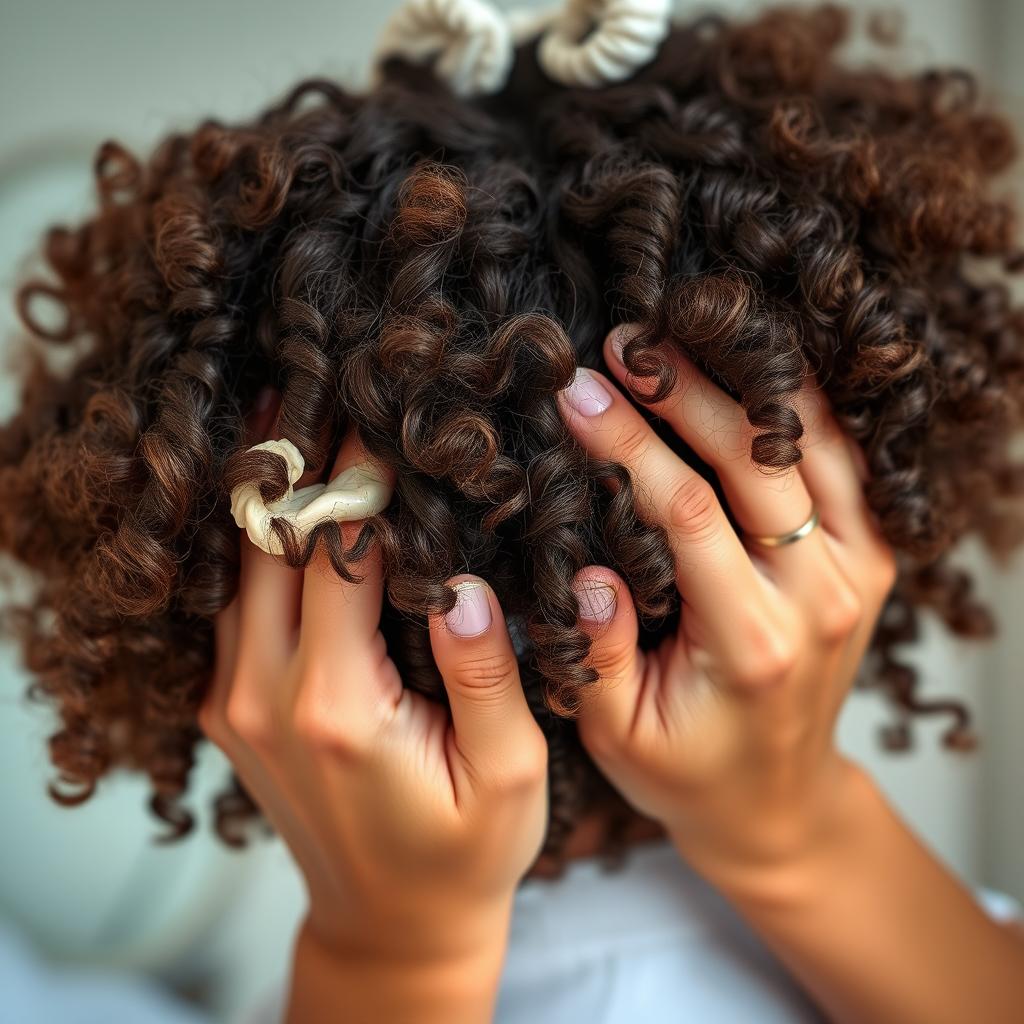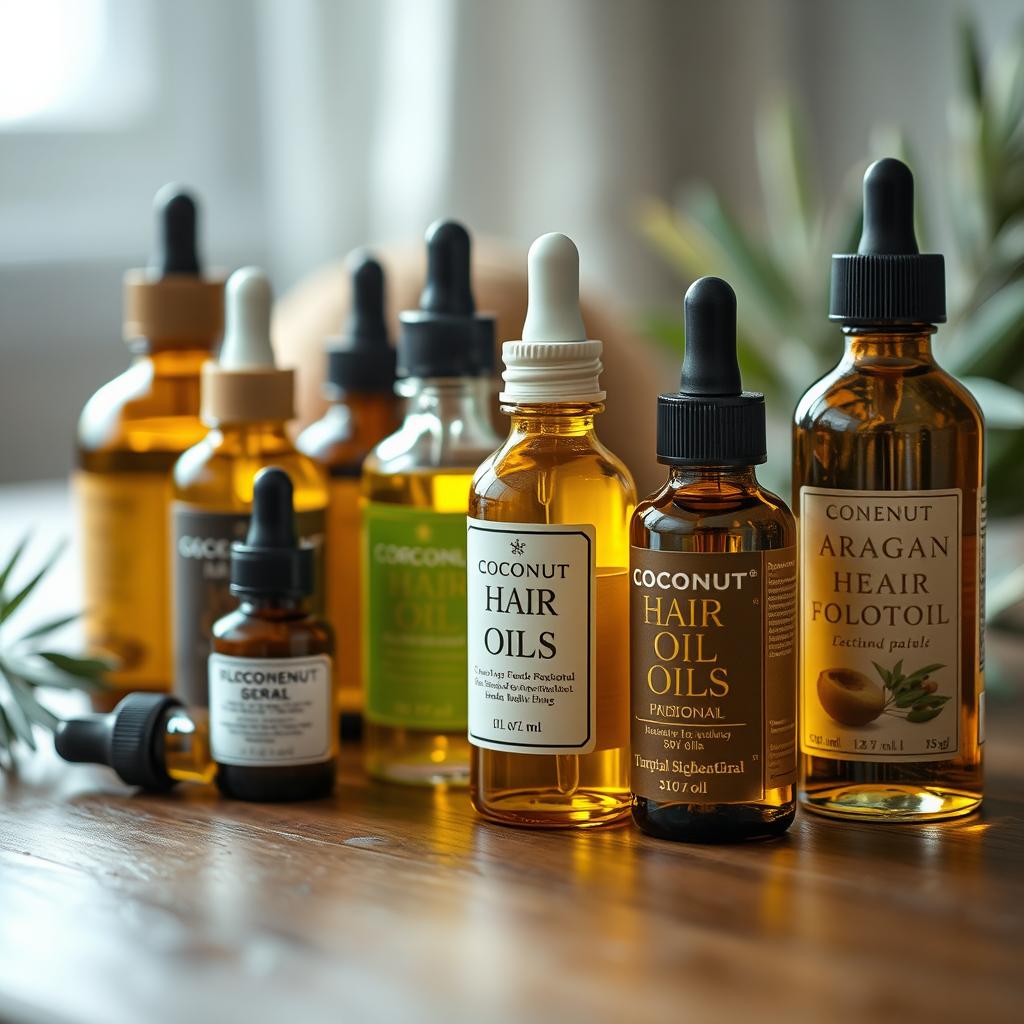Are you tired of dull, lifeless hair? Do you find it hard to find a haircare routine that works?
Getting healthy, vibrant hair doesn’t have to be hard. By creating a daily haircare routine that fits your hair type and needs, you can end bad hair days.
A good haircare routine is key for healthy, shiny hair. We’ll cover hair types, picking the right products, and styling tips.
Key Takeaways
- Know your hair type and concerns for a custom haircare routine.
- Find the best products for your hair.
- Learn styling tricks to boost your hair’s beauty.
- Make a daily haircare routine that suits you.
- Get healthy, vibrant hair with a consistent routine.
Understanding Your Hair Type and Needs
Before starting your haircare journey, it’s key to know your hair type and what it needs. Knowing your hair type helps you pick the right haircare routine. This routine is crucial for healthy, beautiful hair.
The Science Behind Different Hair Types
Hair types fall into straight, wavy, curly, and coily categories. Each has its own needs. The shape of your hair follicle decides your hair type. Round follicles mean straight hair, while oval or elliptical follicles lead to wavy, curly, or coily hair.
Straight, Wavy, Curly, and Coily Classifications
Straight hair tends to be oily. Curly and coily hair types are drier because oil has trouble reaching the ends. Wavy hair needs a balance of moisture and definition.
Hair Porosity and Density Explained
Hair porosity is how well your hair absorbs and holds moisture. Density is how much hair you have. Knowing these helps pick the right products and treatments.
How to Determine Your Hair Type
To find your hair type, look at its natural texture. Is it straight, wavy, curly, or coily? A simple test is to wash your hair gently and let it air-dry to see its natural texture.
Common Hair Concerns and Their Causes
Issues like breakage, frizz, and dryness can be fixed once you know why they happen. Breakage often comes from too much heat styling or the wrong comb.
Breakage, Frizz, and Dryness
Frizz means your hair has a moisture imbalance. Dryness can come from washing too much or using harsh products. Changing your haircare routine can greatly improve your hair’s health.
Scalp Issues and Their Impact on Hair Health
Scalp problems like dandruff or irritation can slow down hair growth and harm overall health. Keeping your scalp healthy with the right care and gentle products is crucial.
The Fundamentals of a Daily Haircare Routine
Your daily haircare routine is the base for healthy, beautiful hair. It includes several key steps. These steps work together to keep your hair healthy and looking good.
Cleansing: More Than Just Shampooing
Cleansing is the first step in any haircare routine. It’s not just about shampooing; it’s about doing it right. The frequency of cleansing depends on your hair type – oily, dry, or somewhere in between.
Frequency Based on Hair Type
If you have oily hair, you may need to shampoo daily. On the other hand, if your hair is dry, you might only need to shampoo a few times a week. Finding the right balance is key.
- Oily hair: Daily shampooing
- Dry hair: 2-3 times a week
- Normal hair: Every other day
Proper Shampooing Techniques
Massaging your scalp gently and rinsing your hair thoroughly are crucial for effective cleansing. Using the right water temperature and a gentle shampoo can make a big difference.
Conditioning: The Key to Manageability
Conditioning is just as important as cleansing. It helps to lock in moisture, reduce tangles, and make your hair more manageable. Using a deep conditioning treatment once a week can be particularly beneficial.
“Conditioning is a critical step that should not be skipped. It helps to repair and protect your hair.”
Treatments: Addressing Specific Concerns
Treatments can address a range of hair concerns, from damage and dryness to color protection. Incorporating a treatment into your daily routine can help to keep your hair healthy and vibrant.
Styling: Protection and Enhancement
Finally, styling is where you get to be creative and enhance your hair’s natural beauty. Using the best haircare products, such as a heat protectant or a styling cream, can help to protect your hair from damage and add shine.
By following these fundamentals, you can create a daily haircare routine that works for you and your hair type. This will help you achieve the healthy, beautiful hair you desire.
Morning Haircare Routine: Starting Your Day Right
We think a natural haircare routine in the morning is key to a great day. A good morning haircare routine can make your hair healthy and stylish with little effort.
Quick Refresh Techniques for Second-Day Hair
For quick mornings, a fast refresh is a must. Use a texturizing spray to boost volume and texture. Dry shampoo can also soak up oil and make your hair look fresh.
- Use a dry shampoo at the roots to absorb oil
- Apply a texturizing spray to add volume and texture
- Style your hair with a curling or flat iron for a fresh look
Heat Protection for Daily Styling
Protecting your hair from heat damage is crucial. Use a heat protectant spray to shield your hair and add shine.
Time-Saving Morning Hair Hacks
Busy mornings need quick fixes. Here are some hacks to save time:
Dry Shampoo Application Tips
Apply dry shampoo to your hair roots, rubbing it in well. This absorbs oil and adds volume.
Quick Styling Solutions for Busy Mornings
Try a simple style like a low bun or a messy top knot. These styles are quick, easy, and stylish.
By adding these tips to your morning routine, you can have a simple yet effective haircare routine. It will help you start your day off right.
Evening Haircare Routine: Preparing for Overnight Recovery
As the day ends, it’s key to get your hair ready for the night. A good evening haircare routine fixes and makes your hair strong and healthy.
Proper Cleansing Techniques
Cleaning your hair right in the evening is crucial. It removes dirt, oil, and extra product. Choose a gentle shampoo that fits your hair type. Massage it into your scalp to boost blood flow and hair growth.
Overnight Treatments and Their Benefits
Overnight treatments give your hair a deep nourishment. Use a hair mask or leave-in treatment to fix damage, moisturize, or prevent breakage. Ingredients like argan oil, coconut oil, or shea butter are great choices.
- Deep conditioning treatments
- Leave-in hair serums
- Hair masks with natural ingredients
Protective Sleeping Habits for Hair Health
Good sleeping habits protect your hair from damage. Use a silk pillowcase or satin bonnet to lessen friction and stop breakage.
Silk Pillowcases and Bonnets
Silk pillowcases and bonnets are soft on hair. They reduce tangles and keep your hair smooth and healthy.

Protective hairstyles like braids or buns also help. They lessen hair handling and breakage. Use a hair tie or scrunchie to keep your hair in place at night.
Adding these tips to your evening routine can make your hair look great in the morning. For more professional haircare advice, talk to a hair expert.
Weekly Haircare Routine for Optimal Results
Getting your hair to look its best takes more than just daily care. You need a detailed weekly plan. Spending a bit more time each week on special treatments can greatly improve your hair’s health and look.
Deep Conditioning Treatments
Deep conditioning is key in your weekly haircare. Apply a deep conditioning mask, then leave it on for 15-30 minutes before rinsing. This fixes damage, keeps moisture in, and makes your hair easier to manage.
For the best results, do deep conditioning once or twice a week. If your hair is dry or damaged, you might need to do it more often.
Scalp Exfoliation and Care
Scalp exfoliation is also vital. It removes dead skin and impurities, helping your hair grow and reducing irritation.
To exfoliate, use a scalp scrub or a soft brush. Massage it into your scalp in circular motions, then rinse with warm water.
Hair Masks and Their Benefits
Hair masks give your hair a deep nourishment boost. They’re made for different hair problems like dryness, damage, or color fading.
DIY Hair Mask Recipes
Making your own hair masks at home is fun and saves money. Try mixing avocado and honey for moisture, or coconut oil and lemon juice for nourishment and brightness.
Store-Bought Options for Different Hair Needs
Store-bought hair masks are convenient. Choose ones that match your hair type and needs. For dry hair, look for moisturizing or hydrating masks.
| Hair Type | Recommended Hair Mask | Key Ingredients |
|---|---|---|
| Dry/Damaged | Moisturizing Mask | Coconut Oil, Shea Butter |
| Oily | Clarifying Mask | Clay, Tea Tree Oil |
| Color-Treated | Color-Protecting Mask | Antioxidants, Vitamin E |
Protein Treatments: When and How to Use
Protein treatments are great for damaged or over-processed hair. They repair and strengthen by filling in protein gaps.
But use them wisely to avoid stiff or brittle hair. Start with once a week and adjust as needed.
Customizing Your Haircare Routine for Different Hair Types
Every hair type needs its own special care. Knowing what your hair needs is key to looking and feeling great. A routine that fits your hair type is essential for healthy, stylish locks.
Haircare Routine for Curly and Coily Hair
Curly and coily hair needs extra moisture and definition. Here are some tips to make your natural texture shine.
Moisture Retention Techniques
To keep curly and coily hair moisturized, use hydrating shampoo and conditioner. Add a leave-in conditioner or hair oil for extra moisture. Here are some tips:
- Use a microfiber towel or an old t-shirt to dry your hair
- Stay away from heat styling tools or use a heat protectant
- Apply a hair mask once a week
Curl Definition Methods
For better curl definition, try these:
- Use a curl activator or curl enhancer
- Scrunch your hair while it’s damp
- Avoid heavy styling products that weigh curls down

Haircare Routine for Fine and Straight Hair
Fine and straight hair benefits from a simple routine. Use a gentle, sulfate-free shampoo and a lightweight conditioner. This avoids weighing your hair down.
Haircare Routine for Damaged or Chemically Treated Hair
For damaged or chemically treated hair, focus on nourishment and repair. Use a deep conditioning treatment once a week. Consider a hair mask with argan oil or keratin.
Haircare Routine for Oily or Dry Scalp Conditions
For oily or dry scalp conditions, balance is key. Use a gentle exfoliating scrub once a week. This removes dead skin cells and promotes healthy hair growth.
Customizing your haircare routine for your specific hair type is crucial. A simple routine can be just as effective as a complex one. It’s all about understanding your hair and using the right products and techniques.
Best Haircare Products for a Natural Haircare Routine
Choosing the right products is key to a natural haircare routine. With so many options, it’s easy to get lost. We’ll show you the essential, natural, and budget-friendly products for healthy, vibrant hair.
Essential Haircare Products Worth Investing In
Good haircare products make a big difference. You need a gentle shampoo, a nourishing conditioner, and a hydrating mask. Pick products that match your hair type and concerns.
Natural and Organic Haircare Options
Natural and organic haircare is popular for its gentle, effective approach. These products use coconut oil, shea butter, and argan oil. They nourish without harsh chemicals.
Ingredient Benefits and Considerations
Knowing your haircare ingredients is important. Coconut oil moisturizes, while shea butter hydrates. Be careful of allergens and choose what’s best for your hair.
Sustainable Haircare Choices
Sustainability matters in beauty. Choose brands with eco-friendly packaging and responsible sourcing. It’s good for your hair and the planet.
| Product | Key Ingredients | Benefits |
|---|---|---|
| Coconut Oil Shampoo | Coconut Oil, Olive Oil | Moisturizes, Gentle Cleansing |
| Argan Oil Mask | Argan Oil, Vitamin E | Hydrates, Repairs Damage |
| Sulfate-Free Conditioner | Shea Butter, Coconut Oil | Nourishes, Gentle on Hair |
Budget-Friendly Products That Deliver Results
Great hair doesn’t have to cost a lot. Look for affordable products with quality ingredients. TGIN and SheaMoisture offer good options for all hair types.
How to Read Product Labels and Ingredients
Reading labels can be tough, but it’s essential. Look for ingredients that help your hair type. Avoid harsh chemicals like sulfates and parabens. Knowing labels helps you choose better.
Professional Haircare Tips and Tricks
Getting salon-quality hair at home is simpler than you might think. With the right tips and tricks, you can make your hair healthier and more vibrant. Just follow a few simple steps and avoid common mistakes.
Salon-Quality Techniques You Can Do at Home
One easy way to get salon-quality hair is by using the right techniques. For example, use a microfiber towel or an old t-shirt to blot out water instead of rubbing with a regular towel. This helps reduce breakage and frizz.
Common Haircare Mistakes to Avoid
It’s easy to make bad haircare habits, even with good intentions. Let’s look at some common mistakes to avoid.
Over-Washing and Product Buildup
Over-washing can dry out your hair and cause damage. Use a gentle shampoo that matches your hair type. Also, avoid using too much product to prevent buildup and weight.
Heat Styling Errors
Too much heat styling can damage your hair. Always use a heat protectant spray when styling with heat tools.
Seasonal Adjustments to Your Haircare Routine
As seasons change, so do your hair’s needs. In winter, switch to moisturizing shampoo and conditioner for dryness. In summer, use lightweight, oil-free products to avoid greasiness.
When to Seek Professional Help
If you have ongoing hair problems like shedding or damage, it’s time to see a pro. A stylist can find the cause and give you personalized advice and treatments.
Conclusion: Building Your Personalized Flawless Haircare Routine
Creating a personalized haircare routine is key to having healthy and vibrant hair. Knowing your hair type and needs is crucial. This way, you can make a daily haircare routine that suits you perfectly. We’ve looked at how to figure out your hair type and the basics of a daily routine.
To get a flawless haircare routine, mix cleansing, conditioning, treatments, and styling. Choose the right products and techniques for your hair type. Following our tips, you can craft a haircare routine that meets your hair goals. This will leave you with beautiful, healthy-looking hair.
FAQ
What’s the best way to determine my hair type?
To find out your hair type, first look at its natural texture. Is it straight, wavy, curly, or coily? Then, think about its porosity, elasticity, and how it reacts to products and styling. You can also talk to a hair expert or take a hair type quiz for help.
How often should I wash my hair as part of my daily haircare routine?
How often you wash your hair depends on your hair type and daily life. If you have oily hair, you might need to wash it every day. Dry or curly hair might only need washing a few times a week. Start with a gentle cleanser and adjust based on your hair’s response.
What’s the difference between a hair mask and a deep conditioning treatment?
A hair mask gives your hair a quick dose of moisture or repair, lasting 15-30 minutes. A deep conditioning treatment goes deeper, lasting 30 minutes to an hour or even overnight. Use a hair mask 1-2 times a week, and deep conditioning treatments every 2 weeks or as needed.
How can I protect my hair from heat damage when using styling tools?
Use a heat protectant spray or serum before styling with heat tools. Lower the temperature of your tools and avoid holding them in one spot for too long. Styling tools with ceramic or tourmaline coating can also help distribute heat evenly.
What’s the best way to care for curly or coily hair?
For curly or coily hair, use gentle, sulfate-free cleansers and moisturizers. Detangle gently in the shower, starting from the ends. Use a microfiber towel or an old t-shirt to blot excess moisture instead of rubbing with a regular towel.
How can I incorporate natural and organic products into my haircare routine?
Look for USDA Organic or NATRUE certifications on product labels. You can also make your own hair care products with natural ingredients like coconut oil and shea butter. Always do a patch test first to check for any sensitivity or allergic reactions.
What’s the best way to address common hair concerns like breakage, frizz, or dryness?
To tackle hair concerns, figure out the cause and adjust your routine. For breakage, use a nourishing mask. For frizz, try a humidity-control spray. Dryness can be fixed with a moisturizing mask or leave-in conditioner. A hair professional can give you personalized advice.
How often should I get a trim as part of my haircare routine?
Trims should be based on your hair type, growth rate, and style. Generally, get a trim every 6-8 weeks to prevent split ends. Adjust this if you have a shorter style or are growing out your hair.


